Known for its rich biodiversity, the Rupununi is an ideal tourists’ destination with some of the most interesting animals. Below are some fascinating facts on a few of the animals found in the Rupununi.
Stingrays
Stingrays spend majority of their time inactive, partially buried in sand, often moving only with the sway of the tide. The stingray’s colouration commonly reflects the seafloor’s shading, camouflaging it from predatory sharks and larger rays. Their flattened bodies are composed of pectoral fins joined to their head and trunk with an infamous tail trailing behind.
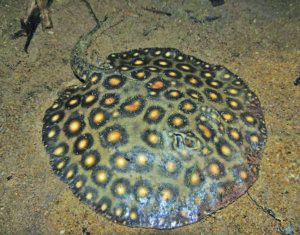
While the stingray’s eyes peer out from its dorsal side, its mouth, nostrils, and gill slits are situated on its underbelly. Its eyes are therefore not thought by scientists to play a considerable role in hunting. Like its shark relatives, the stingray is outfitted with electrical sensors called ampullae of Lorenzini. Located around the stingray’s mouth, these organs sense the natural electrical charges of potential prey. Many rays have jaw teeth to enable them to crush mollusks such as clams, oysters, and mussels.
When they are inclined to move, most stingrays swim by undulating their bodies like a wave; others flap their sides like wings. The tail may also be used to maneuver in the water, but its primary purpose is protection.
The stingray’s spine, or barb, can be ominously fashioned with serrated edges and a sharp point. The underside may produce venom, which can be fatal to humans, and which can remain deadly even after the stingray’s death. In Greek mythology, Odysseus, the great king of Ithaca, was killed when his son, Telegonus, struck him using a spear tipped with the spine of a stingray.
Savanna Hawk
Savanna hawks are commonly seen flying around savannah and swampy areas in from Central America to the Caribbean to Southern South America. It is a carnivore, feeding on meat such as small mammals and insects.
The savanna hawk has very long legs and thus is able to easily walk on the ground to catch its prey, or, like other birds, it can swoop down from the sky or a tree.
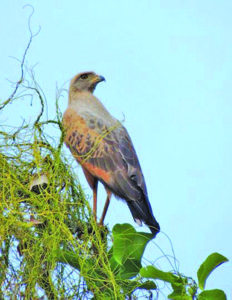
They are known as opportunistic feeders – they eat when there is an easy opportunity to do so. For example, they follow forest fires and feed on escaping animals or steal food from other birds.
Savanna hawks build their nests out of sticks in palm trees, thorny trees or mangroves and use this same nest year after year. Its eggs however are sometimes eaten by larger birds, snakes and other animals that live in trees.
Boa Constrictor
Boa constrictors wear some of the most distinctive markings of all reptiles. Depending on the habitat they are trying to blend into, their bodies can be tan, green, red, or yellow, and display cryptic patterns of jagged lines, ovals, diamonds, and circles.
Boas are non-poisonous constrictors found in tropical Central and South America. Like their anaconda cousins, they are excellent swimmers, but prefer to stay on dry land, living primarily in hollow logs and abandoned mammal burrows.
Significantly smaller than anacondas, boas can grow up to 13 feet long and weigh more than 100 pounds. Their jaws are lined with small, hooked teeth for grabbing and holding prey while they wrap their muscular bodies around their victim, squeezing until it suffocates.
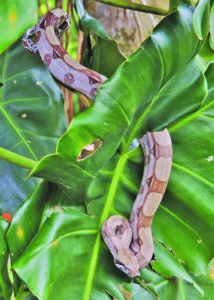
Boas will eat almost anything they can catch, including birds, monkeys, and wild pigs. Their jaws can stretch wide to swallow large prey whole.
Female boas incubate eggs inside their bodies and give birth up to 60 live babies. Boas are about 2 feet long when they are born and grow continually throughout their 25 to 30-year lifespan. The largest boa constrictor ever found measured 18 feet.
Hunted for their fine, ornate skin and for sale in the exotic pet trade, some boa constrictors are endangered and most have protected status in their range.
Black Piranha
Outsized jaw muscles allow the black piranha to exert bite force equivalent to 30 times its bodyweight, a feat unmatched in the natural world.
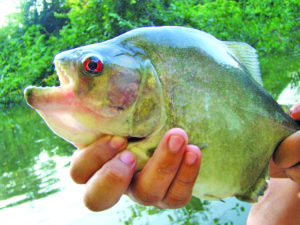
In fact, the muscle complex makes more than two percent of the black piranha’s total body mass.
In fact, relative to their size, piranhas outperform even prehistoric monsters like Tyrannosaurus rex and the whale-chomping megalodon, a massive shark that preceded the great white, according to a research done in the US in 2012.
The measured bite force of the black piranha was nearly three times greater than that exerted by an American alligator of comparative size, said the study.
Black Caiman
The black caiman ranges through Bolivia, Brazil, Colombia, Ecuador, Guyana, Peru, Venezuela, and in French Guiana, and can be found in shallow, freshwater habitats such as slow-moving rivers, creeks and lakes, and would venture into flooded savannah and wetlands.
Black caiman typically hunt at night, using their acute sight and hearing to locate their prey. Fish comprise the major part of the black caiman’s diet, particularly catfish and the much-feared piranha, but adult black caiman also tackle much larger prey such as capybara, turtles and deer.
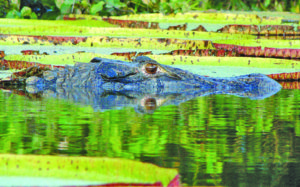
This aquatic hunter is the largest of all alligator species, with reports of individuals measuring six metres (19 feet 8 inches). Domestic animals such as dogs and pigs may be taken by large adult caiman, and there are even reports of people being the victim of an attack. Juvenile black caiman stick to smaller foods, including crustaceans, other invertebrates such as snails, and fish. (Photos by Rupununi Learners on Facebook)



